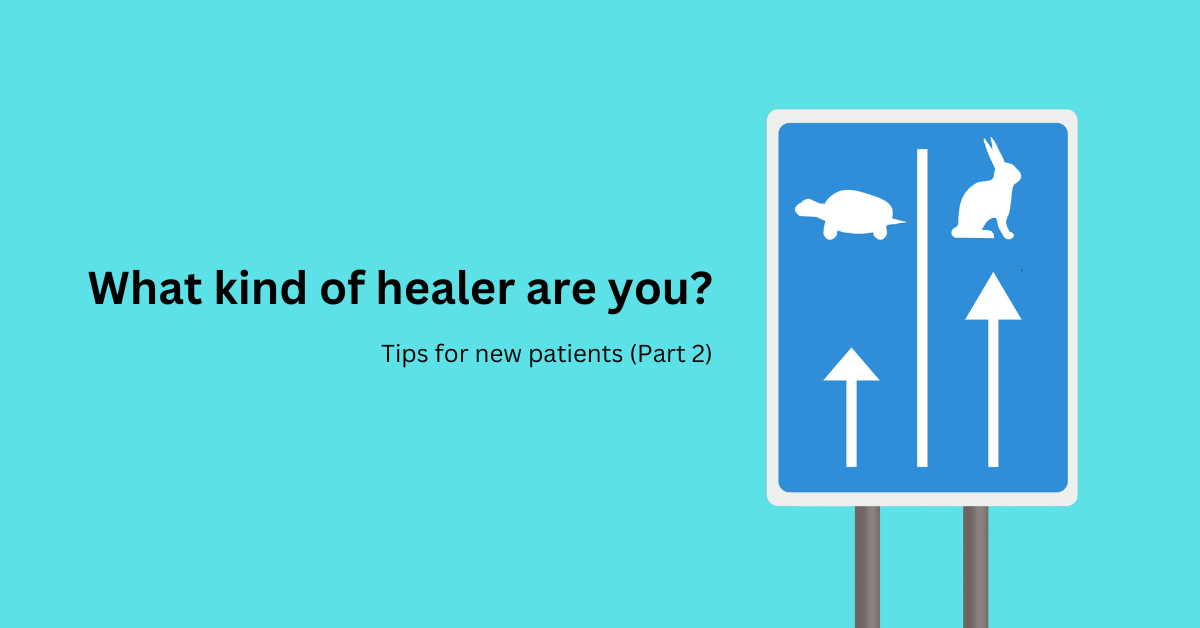There are two kinds of healers (well actually, three). Which one are you?
You might think of me or some other healthcare provider as a healer. But in reality, you’re the primary healer.
All healing is self-healing. Life, by definition, is in a constant state of tearing down and rebuilding. No healthcare provider can really do much for you untless your self-healing capacity is intact.
Three responses to chiropractic adjustments in this practice
There are three typical ways people respond to their first couple of spinal corrections. And here is how it usually happens.
For most people there is a short period where the body experiences a “brief sigh of relief” – and you get a relaxed to slightly sore feeling like you’ve just completed a workout. Almost everyone starts with this kind of response.
Then the road starts to fork.
The slow and steady healers
Some get knocked on their rear or a few days and get really, really sore, and then slowly see symptom improvement over the next month to six weeks. With a few ups and downs here and there, generally these patients see an 80% improvement or more over three months. Generally they hold the major components of their posture changes after a few visits, but need frequent support for the first four weeks.
The sprinters
Some people go from that relaxed feeling to almost instant relief. They might have a few ups and downs here and there, but overall there are few entrenched symptoms, and at the end of six weeks to three months they feel like almost nothing of their previous problems remain. They have large posture shifts almost immediately, and rarely shift back to their old posture alignment. They need fewer support visits over the first four weeks.
The hard-starters
In my practice, most people are slow and steady healers, or sprinters, but some are hard-starters.
These are people that experience almost zero symptomatic change, and very sloooooooooooowly start to improve over the first six to eight weeks. Generally their posture pattern is hard to change and is difficult to hold. Their muscle tone tends to be identifiable by me by its rigidity. Of these kind of healers, they will generally experience about 50% improvement in symptoms we have identified as potentially responsive. But there will be a few (in rare cases) that will see very little improvement at all.
The second healing tip
So here is the second healing tip: The important thing to know is that everyone heals a little bit differently. Keep that mind.
If things seem slow, don’t worry. We are just getting started.
And if things seem to be going really fast, then celebrate, but know you’re not done yet even if you feel good.
- Announcing the Winter Boot Drive of 2024 (to benefit homeless) - December 16, 2023
- Thoughts determine the quality of life – Tips for new patients (Part 8) - September 18, 2023
- Why hasn’t anyone told this to me before? Tips for new patients (Part 7) - September 18, 2023


